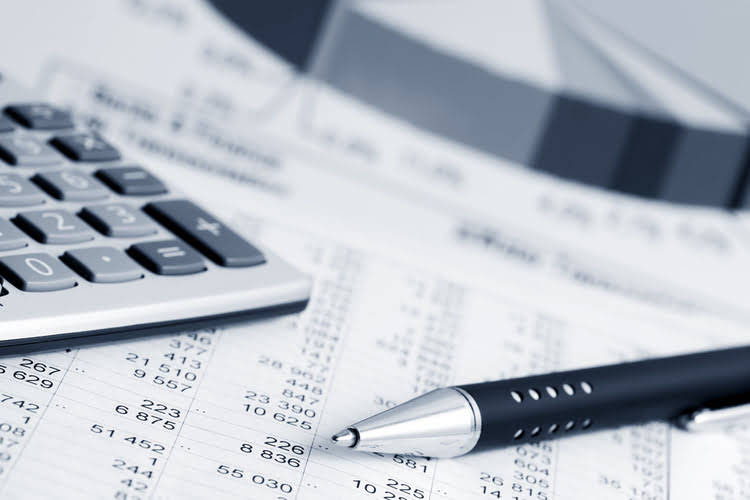
Looking at the same period one year earlier, we can see that the year-over-year (YOY) change in equity was an increase of $9.5 billion. The balance sheet shows this increase is due to a decrease in liabilities larger than the decrease in assets. Note that the treasury stock line item is negative as a “contra-equity” account, meaning it carries a debit balance and reduces the net amount of equity held.
Stockholders’ Equity and Paid-in Capital
- Unlike public corporations, private companies do not need to report financials nor disclose financial statements.
- Of the 50.4 million shares authorized, the company had issued roughly 15.5 million shares.
- Current assets are those that can be converted to cash within a year, such as accounts receivable and inventory.
- Owning stock in a company gives shareholders the potential for capital gains and dividends.
- For example, if a company reports a return on equity of 12% for several years, it is a good indication that it can continue to reinvest and grow 12% into the future.
Retained earnings are part of shareholder equity and are the percentage of net earnings that were not paid to shareholders as dividends. Think of retained earnings as savings since it represents a cumulative total of profits that have been saved and put aside or retained for future use. Retained earnings grow larger over time as the company continues to reinvest a portion of its income.
What are the Components of Shareholders Equity?

The ratio measures the returns achieved by a company in relation to the amount of capital invested. The higher the ROE, the better is the firm’s performance has been in comparison to its peers. It also indicates how profitable it would how to calculate total equity have been if all funds invested were shared by the investors and it shows how well a company is efficiently using its assets. The equity of a company consists of paid-up ordinary share capital, reserves, and unappropriated profit.
Private Equity

Under a hypothetical liquidation scenario in which all liabilities are cleared off its books, the residual value that remains reflects the concept of shareholders equity. The house has a current market value of $175,000, and the mortgage owed totals $100,000. Sam has $75,000 worth of equity in the home or $175,000 (asset total) – $100,000 (liability total). The amount of equity one has in their residence represents how much of the home they own outright by subtracting from the mortgage debt owed. Equity on a property or home stems from payments made against a mortgage, including a down payment and increases in property value.
Liabilities

The return on equity ratio (ROE ratio) is calculated by expressing net profit attributable to ordinary shareholders as a percentage of the company’s equity. When the company’s repurchased shares are absorbed, the number of outstanding shares on the market is reduced. The result is fewer shares on the market, and the ownership percentage of each investor increases. That’s why buybacks benefit shareholders because they always increase the stock’s value in the short term.
What is Shareholder’s Equity?
- If this figure is negative, it may indicate an oncoming bankruptcy for that business, particularly if there exists a large debt liability as well.
- On a company’s balance sheet, the three main categories of information are its assets, liabilities, and stockholders’ equity.
- That’s why it’s referred to as the company’s book value, net worth, or net assets.
- If negative, the company’s liabilities exceed its assets; if prolonged, this is considered balance sheet insolvency.
- Treasury shares or stock (not to be confused with U.S. Treasury bills) represent stock that the company has bought back from existing shareholders.
- Someone on our team will connect you with a financial professional in our network holding the correct designation and expertise.
A company can pay for something by either taking out debt (i.e. liabilities) or paying for it with money they own (i.e. equity). Therefore, the equation reflects the principle that all of a company’s resources (assets) can be paid in one of those two ways. The total equity of a business is derived by subtracting its liabilities from its assets.

11 Financial may only transact business in those states in which it is registered, or qualifies for an exemption or exclusion from registration requirements. 11 Financial’s website is limited to the dissemination of general information pertaining to its advisory services, together with access to additional investment-related information, publications, and links. If average equity cannot be calculated from the available data (e.g., beginning equity is not known), the equity at the end of the period may be used as the denominator. Average equity is calculated by adding the equity at the beginning of the year to the equity at the end of the year and dividing the total by 2. This gives you a real insight into the value and ongoing profitability of your business.
Dividends are paid out in cash, so the company’s cash account would go down by $10,000. People used to get pieces of paper called share certificates (shown above) to show that they actually owned shares of a company. Some companies will still issue paper certificates if you ask them for one, but most stock today is handled digitally. Another benefit of share buybacks is that such corporate actions can send a positive signal to the market, much like dividends, without the obligation to maintain the repurchases (e.g. a one-time repurchase). Once all liabilities are taken care of in the hypothetical liquidation, the residual value, or “book value of equity,” represents the remaining proceeds that could be distributed among shareholders. In order to assess how large the gap is between the market value and book value of a company’s equity, analysts will often use the Price-to-Book (P/B) ratio.
Comments are closed.

